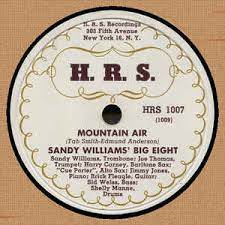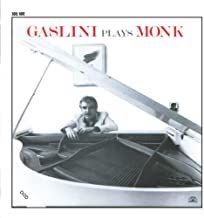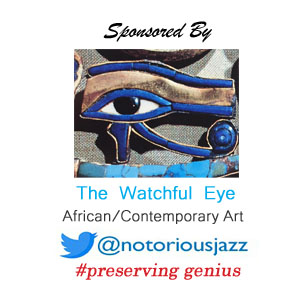
Requisites
Up at Minton’s, Volume 1 ~ Stanley Turrentine | By Eddie Carter
My introduction to tenor saxophonist Stanley Turrentine began in 1963 with two albums by Jimmy Smith, Midnight Special (1961), and Back at The Chicken Shack (1963). Anyone who’s listened to either record knows Turrentine possessed some serious Soul-Jazz chops. He impressed me so much that I wanted to hear more from him. Up At Minton’s, Volume 1 (Blue Note BLP 4069/BST 84069) follows his debut, Look Out (1960), and documents his first live performances at Minton’s Playhouse. Sharing the stage with Turrentine are Horace Parlan on piano, Grant Green on guitar, George Tucker on bass, and Al Harewood on drums. My copy used in this report is the 2011 Analogue Productions 45-rpm two-record Stereo audiophile reissue (AP-84069/BST-84069).
Record One opens with But Not For Me by George, and Ira Gershwin. It first appeared in the musical Girl Crazy, and the quintet’s rendition is exciting from the opening chorus. Stanley is sincere and warm as he begins the first solo but quickly evolves into a rhythmic romp of fire and fury. Grant is equally spirited on the second statement and Horace dispels plenty of energy on a few heated choruses, showing he can swing as hard as his bandmates. Stanley’s Time, an original by the saxophonist starts Side Two at a medium tempo. The rhythm section begins a brief dialogue on the introduction before Turrentine emerges with a relaxing melody. Green is up first with a crisply constructed solo, then the leader explores some interesting avenues on the next reading. Tucker follows with the first of two statements that swing with ease. Parlan provides a remarkable interpretation next, and Stanley adds a brisk footnote on the finale preceding the close.
Record Two begins with a trip to Broadway by Wilbur H. Bird, Teddy McRae, and Henri Woode. The quintet turns the heat up on this swinger with a lively theme. Grant takes the first spot with aggressive fierceness. Stanley steps in next with an enthusiastic performance that receives a well-deserved round of applause from the crowd at its conclusion. Horace makes the piano sizzle next with a hard-hitting attack by his fingers. Stanley and Grant take turns in a vigorous exchange with Al who sparkles like a gem into the ensemble’s ending. The finale is Yesterdays by Jerome Kern and Otto Harbach. The trio starts with a brief introduction, then Stanley’s melody and opening solo are silky smooth. Grant weaves an unforgettable spell of inspiration on the next interpretation and Horace counters with a blissful reading that swings easy. George steps into the spotlight last for a beautifully relaxed performance ahead of Stanley reprising the melody into a calm, serene ending.
Rudy Van Gelder made the original recording, and this reissue was remastered by Kevin Gray and Steve Hoffman of AcousTech Mastering. Both records produce an incredible soundstage with amazing clarity that brings the instruments alive and places the listener in the Minton Playhouse crowd. You not only hear the musicians but the crowd as well and a few glasses tinkling during each song. The music on all four sides is superb and with this lineup, how could it not be? The cover is glossy, but not a gatefold; both records reside in the same opening. The one issue that concerns me is the sleeve doesn’t appear to be sturdy enough to manage the records behind the album cover in outer sleeves to reduce wear to the opening, seams, and spine. If you’re a fan of live jazz and are looking for an album that’s beautifully recorded and engineered, I submit for your consideration, Up at Minton’s, Volume 1 by Stanley Turrentine. It’s a great introduction to his music and a splendid listening experience that not only leaves the crowd satisfied but the listener as well!
~ Back at The Chicken Shack (Blue Note BLP 4117/BST 84117), Look Out (Blue Note BLP 4039/BST 84039), Midnight Special (Blue Note BLP 4078/BST 84078) – Source: Discogs.com ~ But Not For Me, Yesterdays – Source: JazzStandards.com ~ Broadway – Source: Wikipedia.org © 2021 by Edward Thomas Carter

Daily Dose Of Jazz…
Alexander Balos “Sandy” Williams was born on October 24, 1906 in Summerville, South Carolina, the son of a preacher. The family of thirteen moved to Washington D.C. when he was very young however, losing their parents six months apart, they were sent to an orphanage in Delaware. There he joined the school band, but was put on tuba rather than trombone despite his requests. Taking private lessons while attending Armstrong High School, he occasionally played with his professor’s sons, and played with several bands before he started playing with the Lincoln Theater pit band.
Fletcher Henderson strongly influenced Williams jazz musicianship which received local notice. He played with Claude Hopkins, and later in 1929 joined Horace Henderson. He became a staple player in the Chick Webb band from 1933-1940 where he later worked with Ella Fitzgerald. Through the Forties he went on to work with other bands including Cootie Williams, Sidney Bechet, Duke Ellington, Art Hodes and Roy Eldridge, with whom he toured Europe in 1947.
By the early Forties Sandy was suffering from alcoholism, and despite his attempts to become sober, he continued to drink with many of his band leaders until he suffered from a severe breakdown with his health in 1950 causing him to retire from music.
Although he attempted to return to music, his dental health affected his embouchure causing him to quit music entirely. Trombonist Sandy Williams passed away on March 25, 1991 in New York City.
More Posts: bandleader,history,instrumental,jazz,music,trombone

Daily Dose Of Jazz…
Betty Bennett was born in Lincoln, Nebraska on October 23, 1921. Her first major signing was with the Claude Thornhill band in 1946 the band in which her husband, bassist Iggy Shevak, was playing. Shortly after her husband left to join Alvino Rey, Bennett followed him there.
In 1949, she joined Charlie Ventura’s band before going on to join Benny Goodman in 1959. Her second album, Nobody Else But Me, featured arrangements by Shorty Rogers and her second husband, André Previn.
She later married guitarist Mundell Lowe in 1975. Vocalist Betty Bennett, who was a big band singer and recorded five albums as a leader, passed away on April 7, 2020 at the age of 98.
More Posts: bandleader,history,instrumental,jazz,music,vocal

Daily Dose Of Jazz…
Giorgio Gaslini born October 22, 1929 in Milan, Italy. He began performing aged 13 and recorded with his jazz trio at 16. In the 1950s and 1960s, He performed with his own quartet. He was the first Italian musician mentioned as a “new talent” in the Down Beat poll and the first Italian officially invited to a jazz festival in the USA New Orleans 1976-77.
He collaborated with leading American soloists, such as Anthony Braxton, Steve Lacy, Don Cherry, Roswell Rudd, Max Roach, but also with the Argentinian Gato Barbieri and Frenchman Jean-Luc Ponty. He also adapted the compositions of Albert Ayler and Sun Ra for solo piano, which the Soul Note label issued. He also composed the soundtrack of Michelangelo Antonioni’s 1961 La notte (The Night).
From 1991 to 1995, Gaslini composed works for Carlo Actis Dato’s Italian Instabile Orchestra, and was the first to teach jazz courses at the Santa Cecilia Academy of Music in Rome in 1972. In the Seventies he scored ten films between 1970 to 1977.
Pianist, composer and conductor Giorgio Gaslini, who composed symphonic works, operas, and ballets, passed away on July 29, 2014 at 84 in Borgo Val di Taro, Italy in the province of Parma.
More Posts: bandleader,composer,conductor,history,instrumental,jazz,music,piano

The Quarantined Jazz Voyager
For Musicians Only is an album by Dizzy Gillespie, Stan Getz and Sonny Stitt incorporating bebop influences. Produced by Norman Granz, it was recorded on October 16, 1956 at Radio Recorders in Hollywood, California. It wasn’t released until 1958 on the Verve label. It has been described as the real thing, no pretense.
The story behind this session from Stan Levy’s point of view is that everything was done in one take, no 2nd takes, no overdubbing. It was virtually a live, real bebop session, nothing worked out, just play by the seat of your pants or get off the bandstand. Like it or not, that was the way it was with Bird and those cats, the real thing, no pretense.
The album is known for the front line’s winding, intricate solos. This has led to praise for the back line, particularly bassist Ray Brown, for keeping some semblance of the original tune going behind the solos.
Track List | 42:59- Bebop (Gillespie) ~ 12:48
- Dark Eyes (Traditional) ~ 12:10
- Wee (Allen’s Alley) (Denzil Best, Gillespie) – 8:28
- Lover Come Back to Me (Sigmund Romberg, Oscar Hammerstein II) ~ 9:33
- Dizzy Gillespie ~ trumpet
- Sonny Stitt ~ alto saxophone
- Stan Getz ~ tenor saxophone
- John Lewis ~ piano
- Herb Ellis ~ guitar
- Ray Brown ~ bass
- Stan Levey ~ drums
More Posts: adventure,album,club,genius,jazz,museum,music,preserving,restaurant,saxophone,travel,trumpet




